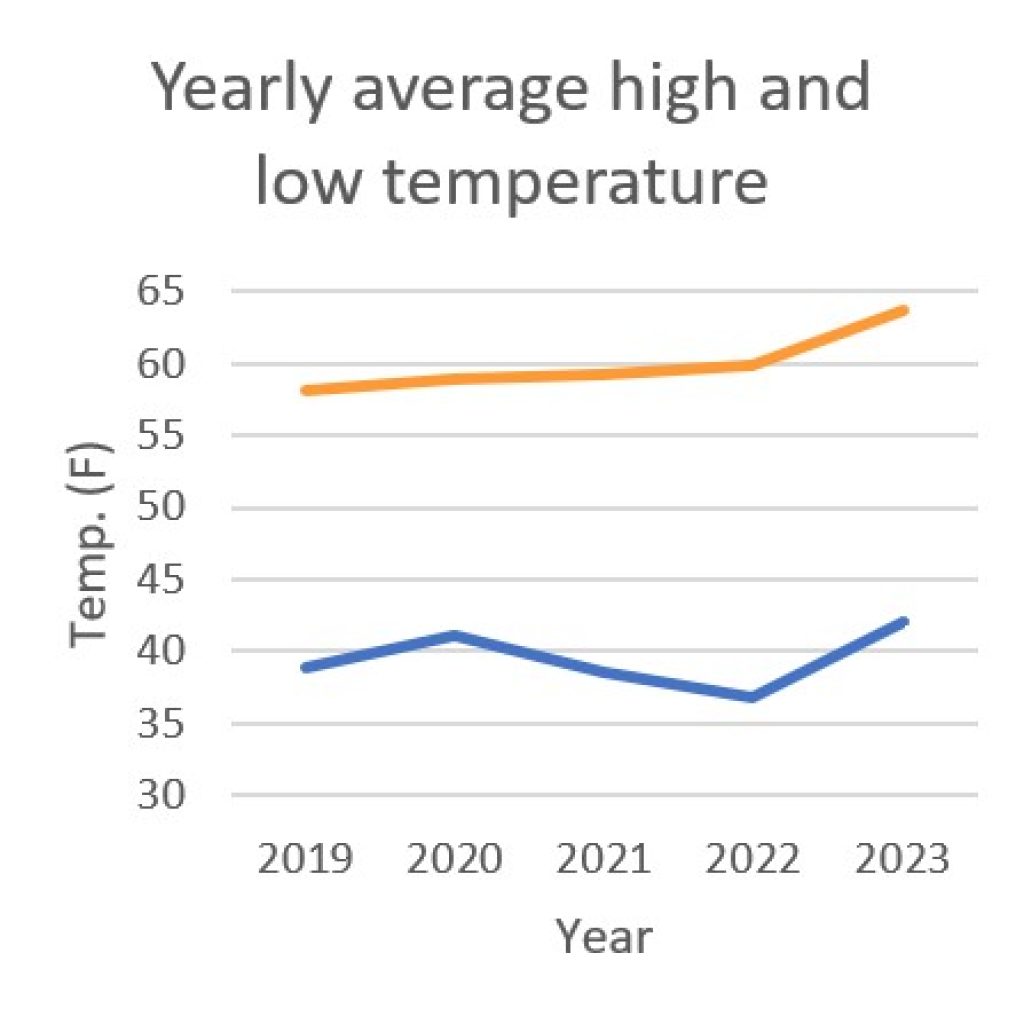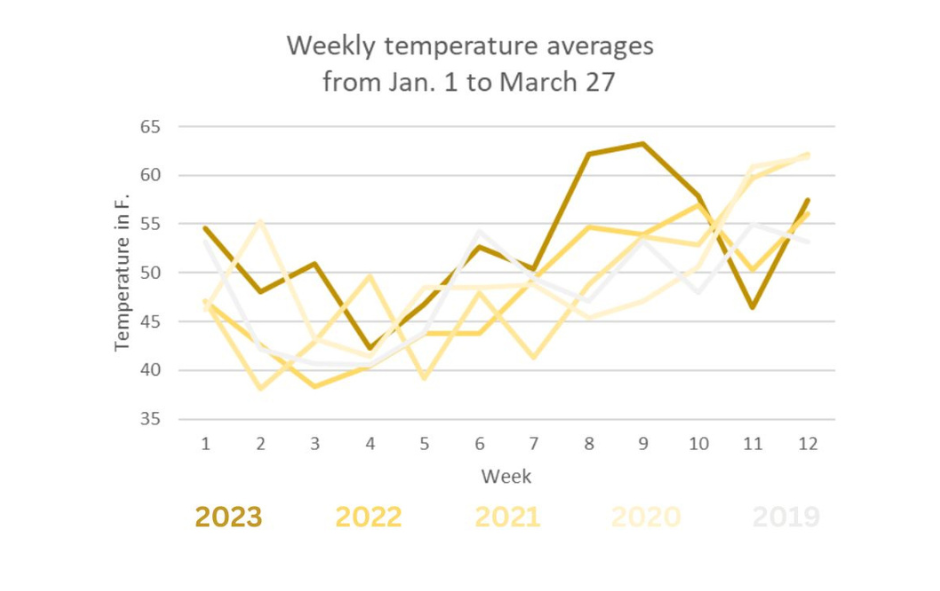Data from Kennesaw State’s weather station has revealed an increase in temperature extremes in the first quarter of 2023 compared to past years, possibly signaling the start to ecological symptoms of localized climate change.
This year, the average minimum through the first quarter of the year was 42 degrees and the average maximum reached 63 degrees. In comparison, last year’s average ranged from 36 to 59 degrees and 2019’s data ranged from 38 to 58 degrees.

Though weather patterns vary from year to year, 2023 has shown upticks in the average highs and lows between Jan. 1 and March 27. According to Nicholas Green, biostatistician and assistant professor of biology at KSU, many more years of data would need to be analyzed in order to predict a general upward trend in local temperature anomalies.
“It’s easy to get caught up in year over year variability because that’s the scale at which we live our lives. But this is really a longer term trend than that,” Green said.
However, he noted that in measuring a seven-day rolling average, weather patterns this year become statistically significant during March.

March of this year brought on unusual patterns with both extreme highs and lows. A heat wave warmed the face of Kennesaw Mountain for three weeks but soon crashed to the mid-40s before steadily increasing once again. This sudden rise and fall was documented in past years, but not to this severity.
The effects of these peaks aren’t only measurable by crowded neighborhood pools and the number of ice cream trucks on the street in early March, when the temperatures reach their peaks. The local ecological effects are a greater concern.
“On local scales, when we see these kinds of temperature changes, the way that that’s usually gonna manifest is in earlier flowering and other sorts of phenomena that are tied to temperature,” Green said. “So for example, animals waking up from hibernation, starting their breeding seasons a little bit earlier. Trees might start leafing out a little bit earlier than they have historically.”
According to ecologist Clint Penick, bees, for example, are able to shift their rhythms to adjust to seasonal shifts. However, crucial pollinators are still being added to the endangered species list because they’re unable to adapt as fast as temperatures are rising.
Penick, an assistant professor at KSU, is familiar with these concerns. In fact, he studied bigger effects on smaller subjects in a research study in Duke and Harvard forests where controlled chambers of the forests were warmed by five degrees. Penick’s research niche turned to the underdogs of ecological systems: ants.
To the surprise of some researchers, the warming at Harvard benefited the ant colonies. In Duke, there were no signs of complete ecological disaster either. Instead, these communities reshuffled to adapt to the change.
In the case of a sudden heat wave, like those that become more frequent with increasing effects of climate change, the heated chambers weren’t as resilient as the control group.
“When that heat wave came through, it knocked out almost every insect that was there. I think we saw over 70% reductions in insect abundance,” Penick said. “ Insects are the base of the food web, so if insects are gone then you don’t have salamanders and birds and everything on top of that. You lose pollinators, all kinds of things.”
Penick said that though the average person may not be aware of these indicators of climate change, researchers who quantify these changes have witnessed their study sites undergo changes before their eyes.
“For me, as a lover of wildlife, it does affect me, I think emotionally, in some ways to watch the negative impacts of climate change and other aspects of us degrading the environment play out,” Penick said.
Chart data sourced from KSU weather station archives.


